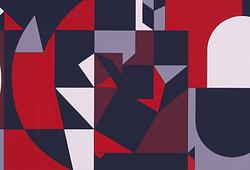Albert Edelfelt
"Shipbuilders"
Signed A. Edelfelt and dated 1886. Oil on canvas laid down on panel 135 x 94 cm.
Provenance
Painted in Haiko August-September 1886 on request from the art dealer Joseph Bulla in Paris for Roland Knoedler in New York; M. Knoedler & Co, New York; acquired in the USA by Swedish diplomatic civil servant; Fritzes Kungl. Hovbokhandel, Stockholm; private collection (acquired through the above mentioned in May 1935).
Exhibitions
The Edelfelt Exhibition in Helsinki, October-November 1886; Cercle de l’Union artistique, Paris, February 1887; Retretti, Punkaharju, 1983, "Albert Edelfelt (1854-1905)", no. 71; Ateneum Art Museum/Finnish National Gallery, Helsinki, "Albert Edelfelt 1854-1905", no 129.
Literature
Ny Illustrerad Tidning, 1888, illustrated p. 307 (reproduced as a woodcut); The Edelfelt Portfolio 1906; Bertel Hintze, ”Albert Edelfelt. Del I. 1854-1888”, 1942, mentioned pp. 168-169 and illustrated full page in colour, Pl. V; Bertel Hintze, ”Albert Edelfelt. Del III. Oljemålningar, pasteller, akvareller, grafiska arbeten m.m. Beskrivande förteckning”, 1942, catalogued p. 85, no. 389; ”Albert Edelfelt. 1854-1905. Jubilee Book”, Ateneum Art Museum/Finnish National Gallery, Helsinki, 2004, catalogued p. 161, no. 129 (under the title ”Shipbuilders”), mentioned in the Chronology, p. 309 and illustrated full page in colour p. 158.
More information
Albert Edelfelt's exquisite depiction of the archipelago, with the playful boys on the beach, was executed late in the summer of 1886, in the artist's studio at Haiko. The studio had been built a few years earlier, in the summer of 1883. Edelfelt's biographer Bertel Hintze writes:
"In the summer of 1883, Edelfelt erected a summer studio on Haiko. In tandem with his plein air studies after nature he also wanted to pursue compositions on a larger scale, which were impossible to carry out on the actual spot, due to rapidly changing weather and light. From now on Edelfelt's larger open air compositions were mainly painted in the new studio”.
That the Haiko studio played an important part in Edelfelt’s development as an artist is evident also in the writings of Soili Sinisalo who gives us the following information:
“The birthplace for Edelfelt’s paintings of ordinary Finnish people was usually Haiko in the province of Uusimaa, where he built a summer studio in 1883 as he spent most of his summers working in Finland. Long journeys of exploration deep into the forest and living in the heart of the countryside did not appeal to Edelfelt as it did to Gallen-Kallela. Edelfelt was a gentleman who was accustomed to living in Paris. For him, the local people of Uusimaa with whom he came in contact in the vicinity of his summer villa were quite sufficient to represent the Finnish people”.
In March 1886 Edelfelt, for the first time, spent a few weeks at the French Riviera. The journey that passed through Provence to Nice, Cannes, Menton and Genoa and later took Edelfelt home via Monte Carlo and Marseille proved a lasting experience for the artist who was enraptured by the colour scheme of southern Europe, of its deep blue skies and bright sun. The intensity of the experience is apparent in a letter to his mother where the artist writes: "When the sun is bathing everything and the sea is clear blue behind, it is a pleasure and pure bliss to look at all this ‘délire de couleurs’ ".
Bertel Hintze, once again, has stated that Edelfelt's painting from the period:
"is entirely in tune with the Impressionist rendering of natural light. The capturing of the fleeting moment, the pure, shining colour [...] against the pearly gray tones of the sun glittering on the surface of the water, the soft atmosphere that sweeps the background and clads it in a silvery haze, the swift brushstrokes, which seem to be permeated by sunshine and warm trembling air".
When the painting was shown at Edelfelt's exhibition in Helsinki in the fall of 1886, the newspapers singularly praised the artist’s "glorious rendering of sunlight" and "the depiction of transparent air". The largest painting, the present lot "Shipbuilders", received the following praise by an enthusiastic reviewer:
"rarely, did you see a more superior treatment of light, rarely has an artist in a happier way captured the characteristics of a clear Nordic summer day ".
Hintze concludes:
"In these works from the summer of 1886, Edelfelt has reached one of the goals he has been striving towards ever since his naturalist breakthrough work 'Conveying the Child's Coffin' [1879]: to capture and reproduce the archipelago's distinctive, clear atmosphere, in which colours appear with a distinctive sharpness, which is fundamentally strange to contemporary French painting, characterized by the moisture-saturated air and the faint light of the plains around Paris. In these works we’re faced, for the first time, with an Impressionistic painting that completely expresses the distinct and unique character of Finland's own nature”.
Artist
Albert Edelfelt is considered one of Finland's greatest artists of the 19th century. After studying in Antwerp and Paris, he settled in France, where he received several exhibition medals and was honored with the Legion of Honour, notably for the famous portrait of Pasteur. He was also summoned by Alexander III to St. Petersburg to portray the Tsar's children. Edelfelt often returned to themes from Finnish history, such as his illustrations for 'The Tales of Ensign Stål.'
Edelfelt's works display an artistic breadth that ranges from everyday life in the Finnish archipelago to prestigious society portraits and historical paintings. In his depictions of everyday life, he managed to merge traditional academic painting with the new techniques of plein air painting, which achieved great success in France. The painting 'The Funeral of a Child' was awarded a third-class medal at the annual Salon in Paris in 1880, marking the most significant international success for Finnish painting at the time.
Albert Edelfelt is primarily represented in Ateneum in Helsinki, but also in the National Museum in Stockholm, as well as museums in Copenhagen, Luxembourg, and Paris.
Read more























































